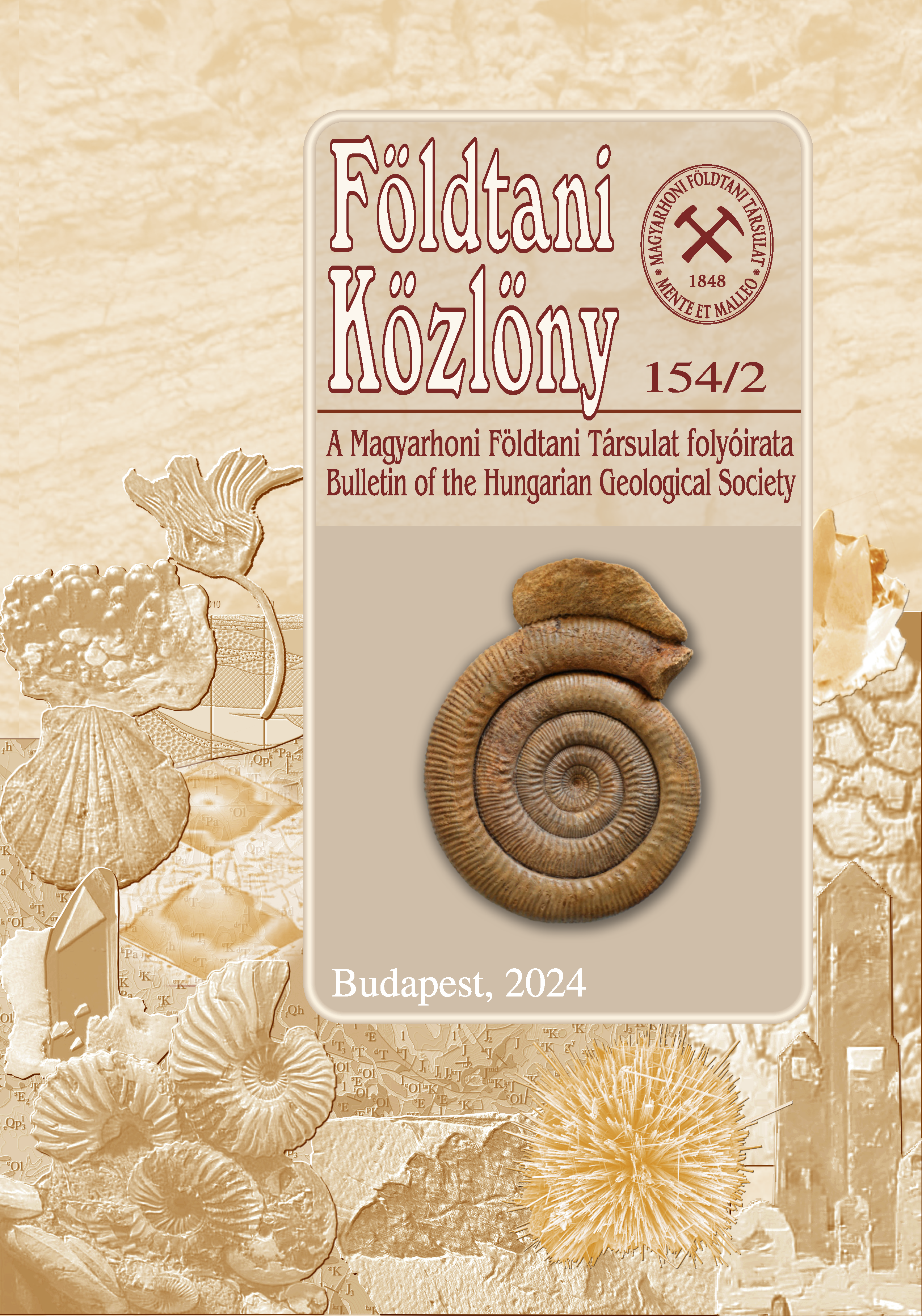Uppermost beds of the Dachstein Limestone south of Pusztavám village, Vértes Hills, Hungary
Abstract
As an outcome of geological mapping of the Vértes Hills micrafacies and biostratigraphic studies were performed on
the Dachstein Limestone succession in an abandoned quarry located to the south of Homok-tisztás, Pusztavám (Figure
1). Description of the columnar section, microfacies and microfossil investigation of 40 thin sections and some thermal,
X-ray diffraction and chemical analyses were carried out.
Investigations led to conclusion that the Dachstein Limestone sequence of the quarry is neither an ordinary nor a
totally anomalous one although it has significant differences from the typical Lofer cyclic Dachstein Limestone. In spite
of this some irregular repetitions of the sedimentary environments can be recognized (Figure 2). The most striking
pattern of the sequence is the richness of oolites in the form of ooidic grainstone and packstone respectively, which are
typical for the more easterly territories of the Transdanubian Range. The lower third of the succession is characterized by
wackestone type limestone with varied fragments of Dasycladalean. Higher in the succession Lofer member A are
represented by calcareous dolomites and variageted clays — well bedded sediments of drying out or even evaporating
lakes occur in two thicker intercalations. This “dismicrite type” sediments with bird’s eye structure and shrinkage cracks
are usually barren in fossils or it may contain some tiny Ostracods only. As an exceptional case several specimen of smallsize Acicularia sp. (Dasycladalean) can be found in a thin horizon within this dolocrete (caliche) type sediment.
Megalodontids can be found in the uppermost beds of the sequence only.
Based on palaeontological data — presence of Heteroporella zanki OTT (Dasycladalean) and Aulotortus sinuosus
WEYNS. (foraminifera) and the lack of Triassina hantkeni MAJZON (foraminifera) — the age of the Dachstein Limestone
of the quarry is Norian.
An attempt is made for correlating the succession of the Homok-tisztás quarry and that of the Templom Hill and
Páskom, Borzavár (Bakony Mountains) aiming to accentuate both similarities and differences in lithology, fossil content
and sedimentary environments.











